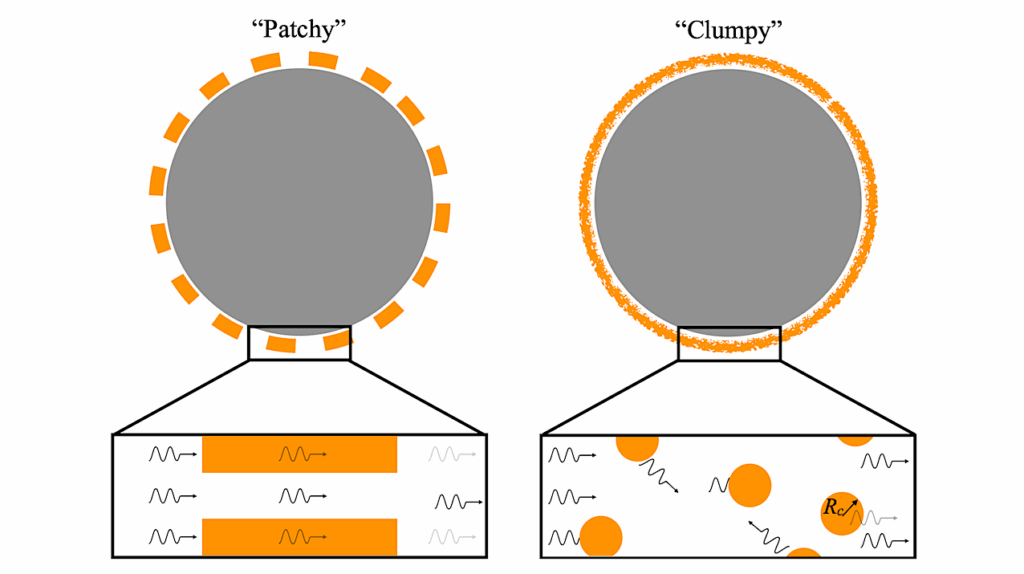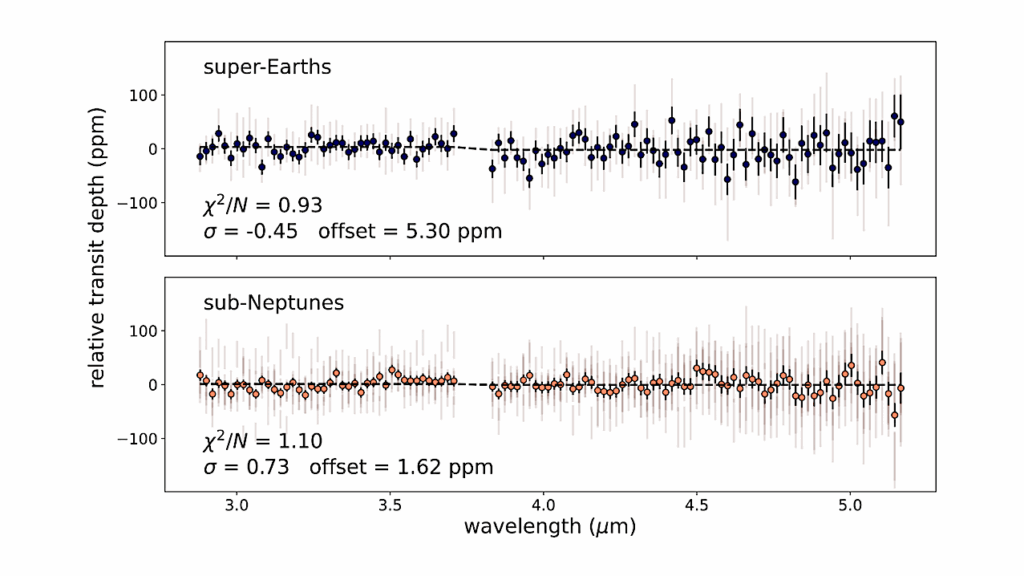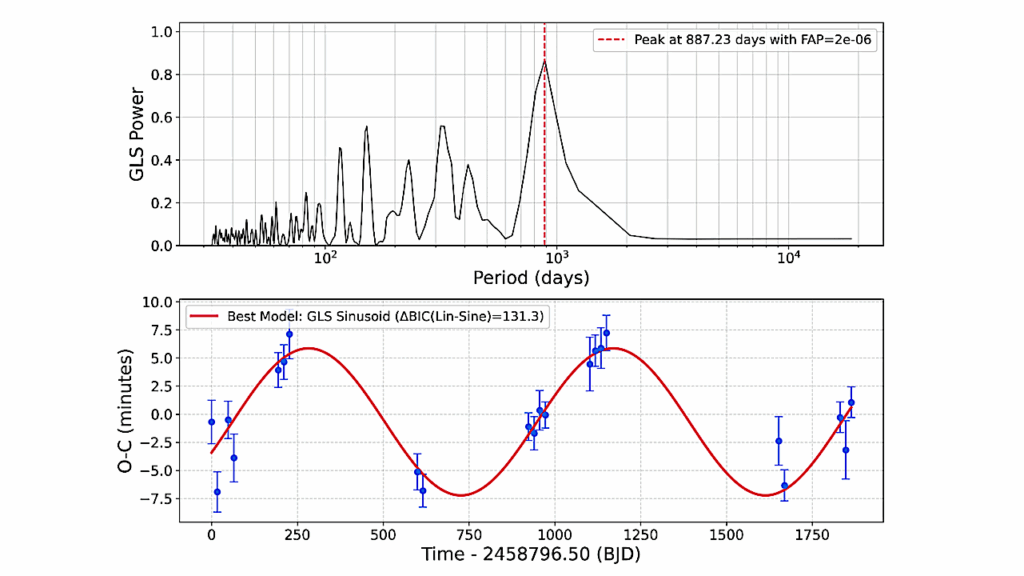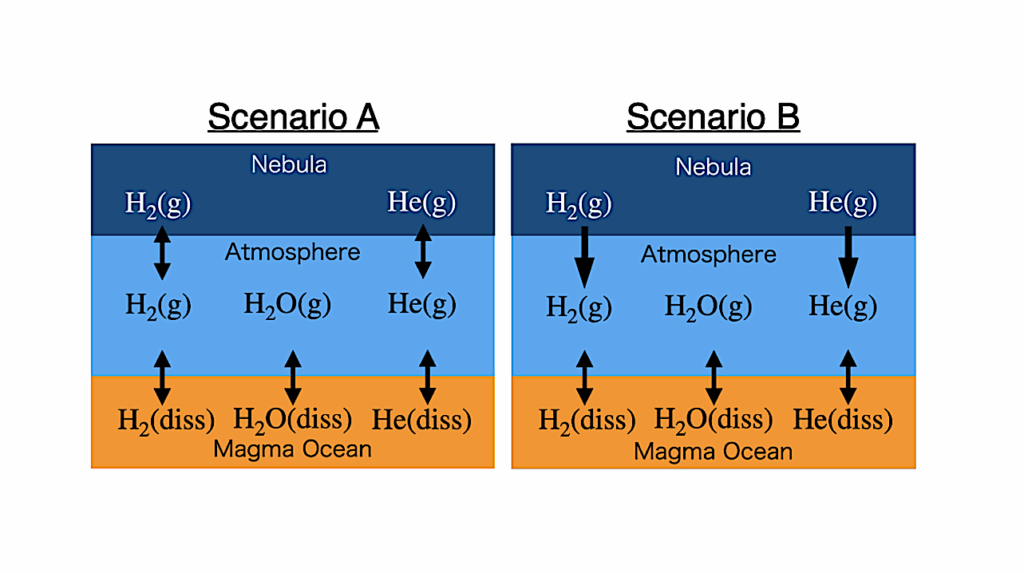JWST COMPASS: The 3-5 Micron Transmission Spectrum of the Super-Earth L 98-59 c

We present a JWST NIRSpec transmission spectrum of the super-Earth exoplanet L 98-59 c. This small (Rp=1.385±0.085R⊕, Mp=2.22±0.26R⊕), warm (Teq=553K) planet resides in a multi-planet system around a nearby, bright (J = 7.933) M3V star.
We find that the transmission spectrum of L 98-59 c is featureless at the precision of our data. We achieve precisions of 22ppm in NIRSpec G395H’s NRS1 detector and 36ppm in the NRS2 detector at a resolution R∼200 (30 pixel wide bins).
At this level of precision, we are able rule out primordial H2-He atmospheres across a range of cloud pressure levels up to at least ∼0.1mbar. By comparison to atmospheric forward models, we also rule out atmospheric metallicities below ∼300× solar at 3σ (or equivalently, atmospheric mean molecular weights below ∼10~g/mol).
We also rule out pure methane atmospheres. The remaining scenarios that are compatible with our data include a planet with no atmosphere at all, or higher mean-molecular weight atmospheres, such as CO2– or H2O-rich atmospheres.
This study adds to a growing body of evidence suggesting that planets ≲1.5R⊕ lack extended atmospheres.
Nicholas Scarsdale, Nicholas Wogan, Hannah R. Wakeford, Nicole L. Wallack, Natasha E. Batalha, Lili Alderson, Artyom Aguichine, Angie Wolfgang, Johanna Teske, Sarah E. Moran, Mercedes Lopez-Morales, James Kirk, Tyler Gordon, Peter Gao, Natalie M. Batalha, Munazza K. Alam, Jea Adams Redai
Comments: 21 Pages, 13 Figures; Accepted to AJ
Subjects: Earth and Planetary Astrophysics (astro-ph.EP)
Cite as: arXiv:2409.07552 [astro-ph.EP] (or arXiv:2409.07552v1 [astro-ph.EP] for this version)
https://doi.org/10.48550/arXiv.2409.07552
Focus to learn more
Submission history
From: Nicholas Scarsdale
[v1] Wed, 11 Sep 2024 18:16:06 UTC (7,152 KB)
https://arxiv.org/abs/2409.07552
Astrobiology,








